Key principles of bed and mattress
Selecting the right bed and mattress for a person with an SCI can make a significant difference to the risk of acquiring pressure injuries. This section outlines the fundamentals of bed and mattress best practice, as part of overall skin care management for SCI.
Level of pressure relief
- Pressure-relieving equipment does not remove all pressure, or the need to reposition and do regular pressure relief.
- Choosing the best mattress for a person with SCI is determined by trial and observation. A two-week trial is ideal to see the impact on the skin and the person’s level of function.
- Start with turns every 2 hours, evaluating the skin at each turn. Increase the time of each lying position, as tolerated. If there are concerns, decrease the time between turns until the mattress can be changed.
- Ensure the mattress is providing adequate pressure redistribution. Check areas of excessive pressure or possible ‘bottoming out’ on the mattress, by sliding a hand between the person’s bony prominence and the mattress. (This short video is helpful, for extra guidance on testing for mattress pressure points: Bottoming Out Test for Pressure Mattress).
Positioning in bed
- Lying: Ideally, keep the head of the bed flat. Rotate between different positions that the person can tolerate in bed, such as side-to-side, supine and prone. There are added benefits to side-lying, such as a stretched position, to maintain joint range and respiratory function. Side-lying also establishes an alternative lying position, if a skin injury occurs.
- Sitting up in bed: People should not sit up in bed for more than 20 minutes, irrespective of the quality of the bed or mattress, as this position increases shear and friction.
- Use of pillows: Pillows can be used to relieve pressure contact between the bony surfaces of the knees and ankles, when side-lying, and to elevate heels, when supine. Ensure the pillows support the knees in supine, to avoid hyperextension of the joint.
- Consider the use of wedges in side-lying: Wedges can increase comfort and may help to increase tolerance for side-lying.
90-degree hip flexion in supine
Can provide pressure relief for the ischium, lateral and posterior greater trochanter areas. Always check clearance with any pressure injury after repositioning.
Important tips on this positioning:
- Stack pillows to gain enough height to achieve approximately 90-degree hip flexion.
- Pillows can be placed at the end of the bed to provide support to the pillow ‘stack’.
- Note: this technique doesn’t provide ankle support to prevent foot drop.
- Keep the bed flat, to avoid movement of the pillows and pressure to the ischial tuberosities and greater trochanter areas.
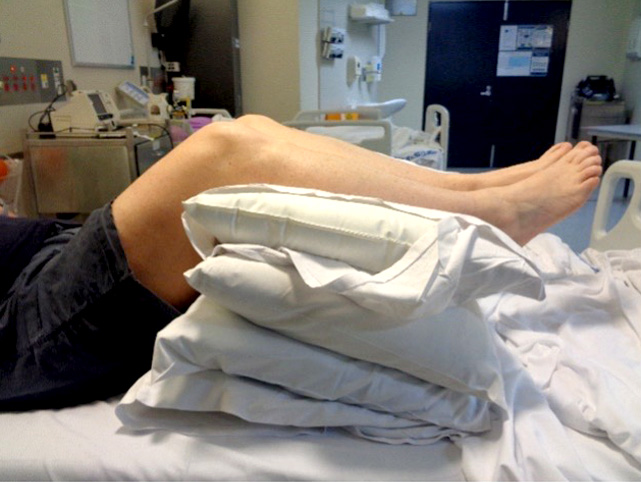
Supine positioning
Can provide pressure relief for the lateral greater trochanters. Always check clearance with any pressure injury after repositioning.
Important tips on this positioning:
- Make sure the knees are supported to prevent injury, with a slight knee bend. This can also reduce triggering spasms.
- Elevate the heels off the bed, using pillows, and separate the feet to hip width.
- Use pillows at the end of the bed, to support ankles in a 90-degree position, to prevent foot drop.
- Consider using the knee-bend feature on the bed, when sitting, to prevent sliding down the bed.
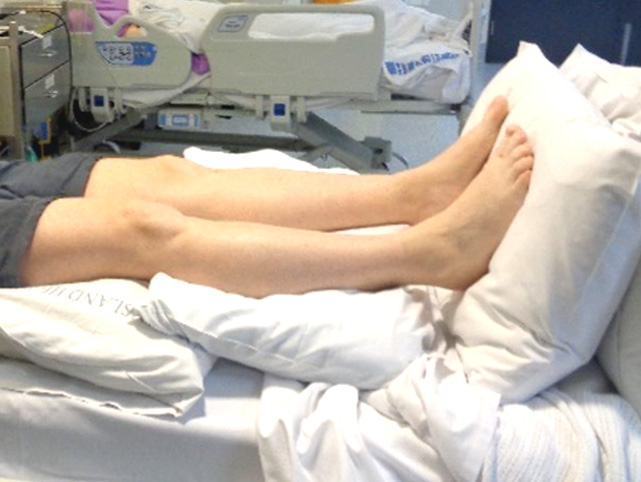
Side-lying
Side-lying can provide pressure relief for the ischium, sacrum, coccyx and non-weight-bearing lateral and posterior greater trochanter.
Important tips on this positioning:
- Firmly place two pillows behind the person, to prevent rolling onto their back.
- Separate the medial aspect of the knees with pillows. The top leg can be brought further forward, to prevent rolling back.
- Keep the leg in alignment with the hip.
- For comfort, avoid placing the person directly onto the shoulder tip and provide a ‘cuddle’ pillow in front, if needed.
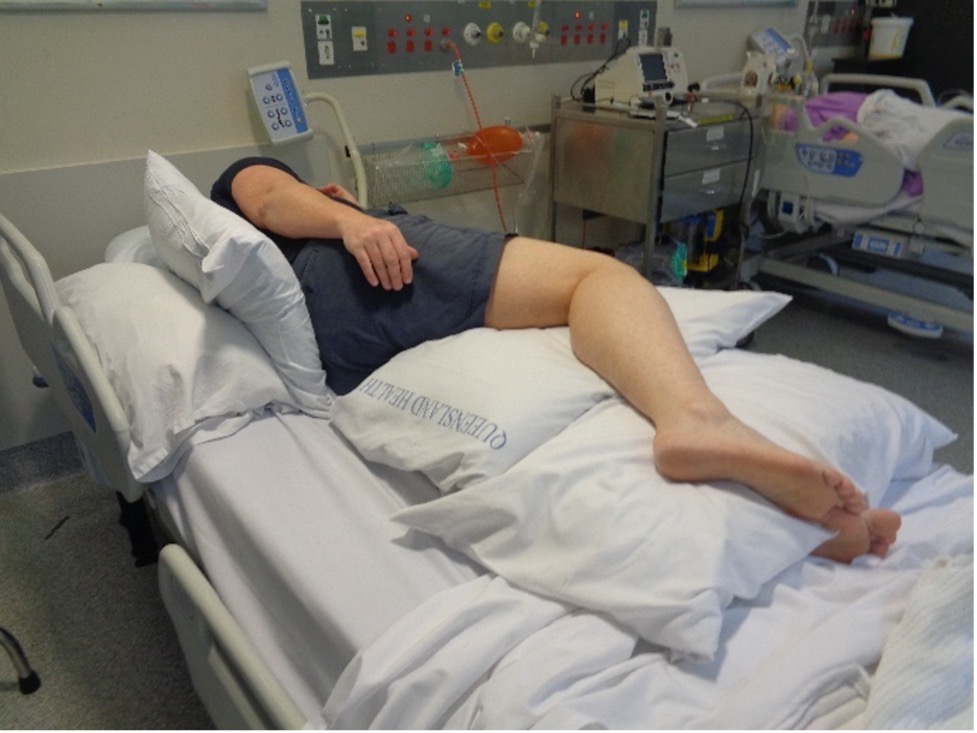
Side-lying: quarter turn
This lying position can provide pressure relief for the ischium, sacrum, coccyx, lateral and opposite posterior greater trochanters. It works well if the person experiences shoulder pain and cannot tolerate turning onto their shoulder. Always check clearance with any pressure injury after repositioning.
Important tips on this positioning:
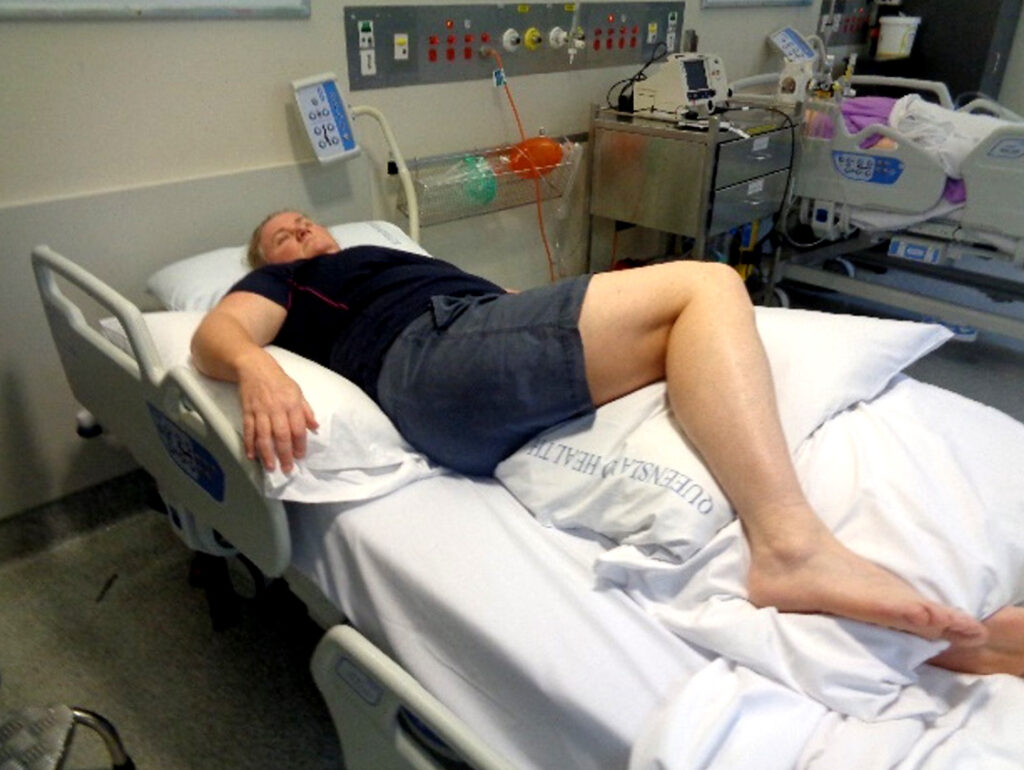
This positioning allows the top half to be almost flat. The lower half is rotated to offload the sacral region. To maintain this position, the bed needs to remain flat or with very little head raise.
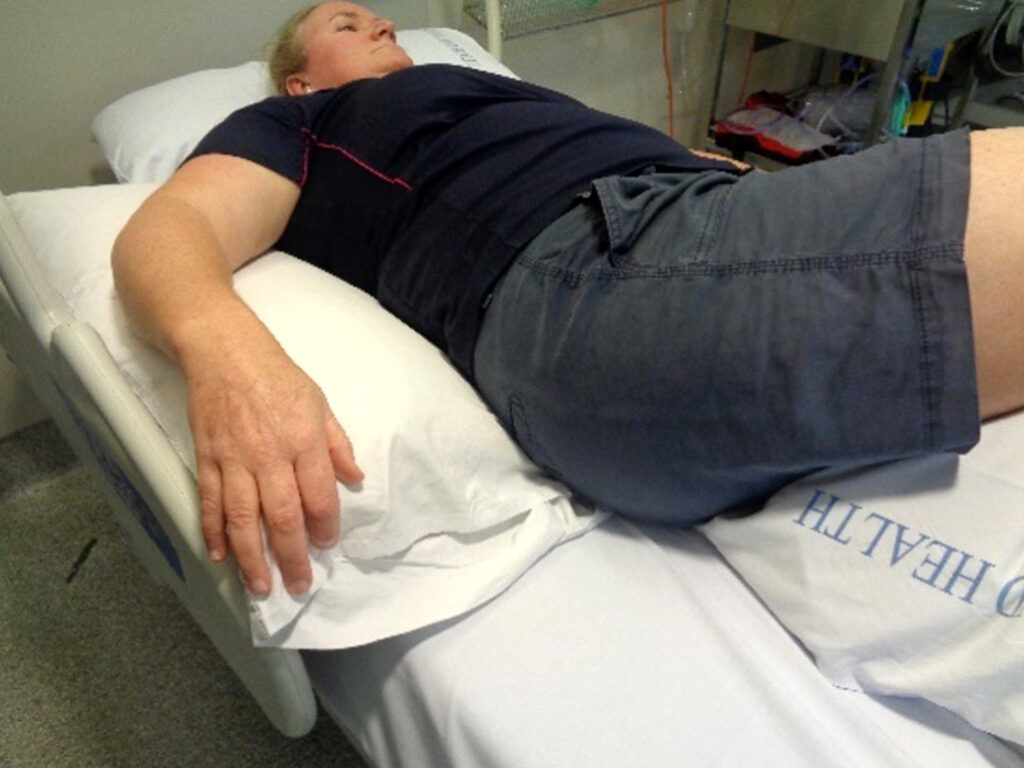
One pillow is placed behind the person, with a focus on propping the back of the lumbar area/pelvis to prevent rolling into supine.
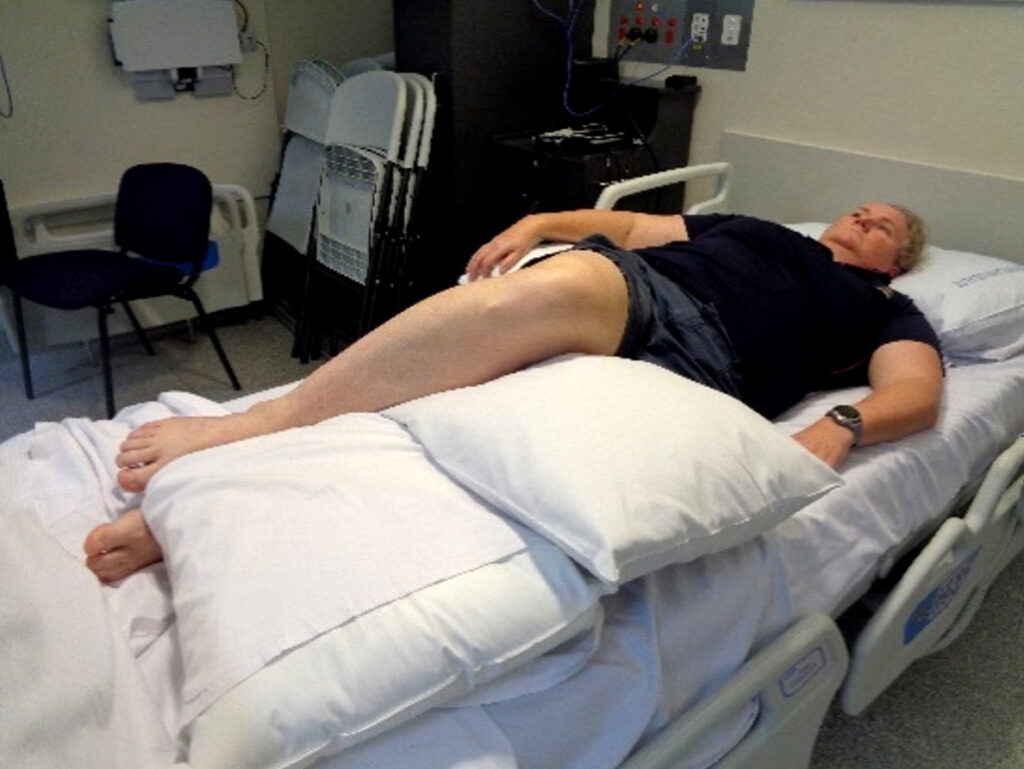
The leg pillows can be positioned either across, as seen in the side-lying position. Alternatively, two pillows can be placed under the top leg and one under the bottom leg.
Person’s dimensions
- Height: Mattress and bed lengths can be customised to accommodate very tall people.
- Weight: Mattresses can have minimum and maximum weight limits and clinicians should review manufacturer guidelines.
Bed functions
- Hi-lo function: This is important for ensuring adequate clearance for transfers, including hoisting or achieving a high-to-low height for seated transfers.
- Knee bend: The knee bend can be used to prevent sliding down the bed.
- Bed accessories: The addition of bed rails and bed ladders can enable a person with SCI to assist or self-manage repositioning. Overbed rings are not used, due to the risk of damage and injury to the shoulder.
- Size: Considerations for bed size include the person’s bed mobility, access to environmental controls and care supports, room circulation space and preference to sleep beside a partner.
Mattress functions
- Comfort: The mattress should optimise personal comfort, with consideration to temperature, management of pain and motor noise.
- Fowler boost: This feature increases airflow under the seated area, when the person is sitting up in bed, to prevent ‘bottoming out’.
- Bed protectors and continence sheets: These can impair the ability of the person to immerse themselves into the mattress, compromising pressure redistribution. Protectors and continence sheets can also increase body temperature and wrinkle under the person, compromising comfort.
- Power supply: Consider power supply options, for people discharging to the community, and how this might influence bed and/or mattress selection.
Balance of function and independence
- Independence and mattress surface: The mattress needs to provide the best pressure relief for the person, allowing for independent bed mobility and transfers. A firmer surface will allow this to occur, but will provide a ‘lower level’ of pressure relief.
- Travel: Can the person take their mattress with them or find a suitable option for travel, if needed?